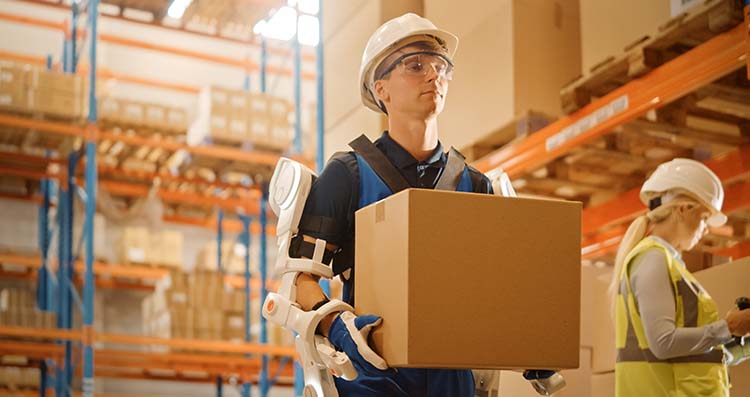Does an exoskeleton always offer the right ergonomic solution?
The exoskeleton is a wearable mechanical structure that provides support for physical tasks. For many employers, it sounds like a welcome tool to protect employees preventively. Especially if you know that no less than 57% of Belgian employees were struggling with physical complaints in 2020. But does an exoskeleton offer sufficient protection?
The first exoskeleton was developed over 130 years ago. So this portable device is not a new invention, but the designs have evolved a lot. We make a distinction between two categories:
- Active exoskeleton: These exoskeletons have an external drive to produce extra strength in the joints. Think of an electric, hydraulic, or pneumatic motor, for example.
- Passive exoskeleton: These exoskeletons work with a spring system. When users perform a movement, their energy is stored. This same energy can be used to facilitate physically demanding postures.

Theory vs. practice
In theory, exoskeletons offer many advantages. They relieve the strain on the back, help with fatigue, and improve performance. In addition, the devices prevent physical injuries, thus indirectly improving employees’ overall quality of life.
In practice, however, these advantages are not so pronounced. The nature of the task, the employee’s freedom of movement, and the subjective acceptance of the exoskeleton largely determine the added value of the tool.
Carglass, BruBotics, and Mensura test exoskeletons
Carglass, a specialist in car windshield and bodywork repair and replacement services, has paid a lot of attention to ergonomics. After all, lifting, moving, and installing car windshields puts a strain on the back and shoulders. That’s why the organisation was happy to test how their employees experienced the use of exoskeletons. Read more about the experiment here.
No ergo, no exo
The use of exoskeletons for static and repetitive tasks can actually lead to less physical strain, less fatigue, and better performance. But when employees perform dynamic tasks, this wearable device isn’t the right solution (yet). In that case, employees experience too many comfort issues. Walking or climbing stairs or a ladder, for example, are not easy tasks when wearing an exoskeleton. In addition, users often maintain a less favourable posture in order to feel an effect. This changes the balance of muscle function, which has important consequences, especially for dynamic tasks and in confined spaces.

Concrete step-by-step plan
Therefore, the use of an exoskeleton is not sufficient to protect your employees during their performance of physical tasks. Instead, you should opt for a concrete step-by-step plan that focuses on optimising the working environment and training your employees to work ergonomically. Our revamped ‘Lifting heavy objects and preventing (back) aches and pains’ training course teaches your workers how to lift smartly and move in a healthy manner at work.
Protecting your employees with a comprehensive strategy
Our experts will draw up a thorough ergonomic analysis of your workplace and offer concrete, customised advice. Contact us for more information through the form below.